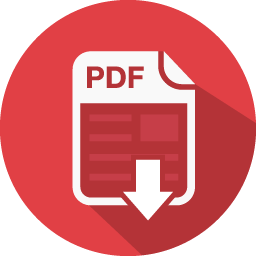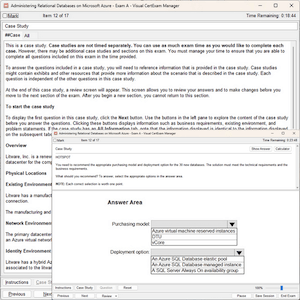Test Prep SBAC dumps - 100% Pass Guarantee!
Vendor: Test Prep
Certifications: Test Prep Certifications
Exam Name: Smarter Balanced Assessment Consortium
Exam Code: SBAC
Total Questions: 224 Q&As ( View Details)
Last Updated: Mar 16, 2025
Note: Product instant download. Please sign in and click My account to download your product.

- Q&As Identical to the VCE Product
- Windows, Mac, Linux, Mobile Phone
- Printable PDF without Watermark
- Instant Download Access
- Download Free PDF Demo
- Includes 365 Days of Free Updates

VCE
- Q&As Identical to the PDF Product
- Windows Only
- Simulates a Real Exam Environment
- Review Test History and Performance
- Instant Download Access
- Includes 365 Days of Free Updates
Test Prep SBAC Last Month Results
 97.3% Pass Rate
97.3% Pass Rate 365 Days Free Update
365 Days Free Update Verified By Professional IT Experts
Verified By Professional IT Experts 24/7 Live Support
24/7 Live Support Instant Download PDF&VCE
Instant Download PDF&VCE 3 Days Preparation Before Test
3 Days Preparation Before Test 18 Years Experience
18 Years Experience 6000+ IT Exam Dumps
6000+ IT Exam Dumps 100% Safe Shopping Experience
100% Safe Shopping Experience
SBAC Q&A's Detail
| Exam Code: | SBAC |
| Total Questions: | 224 |
| Single & Multiple Choice | 216 |
| Drag Drop | 1 |
| Hotspot | 7 |
CertBus Has the Latest SBAC Exam Dumps in Both PDF and VCE Format
- Test Prep_certbus_SBAC_by_Pier_196.pdf
- 274.89 KB
- Test Prep_certbus_SBAC_by_Ricki_213.pdf
- 237.65 KB
- Test Prep_certbus_SBAC_by_Theodore_April_194.pdf
- 280.49 KB
- Test Prep_certbus_SBAC_by_Khurram_Nawaz_206.pdf
- 248.11 KB
- Test Prep_certbus_SBAC_by_King_Kong_213.pdf
- 269.11 KB
- Test Prep_certbus_SBAC_by_jiovalon_206.pdf
- 317.43 KB
SBAC Online Practice Questions and Answers
FILL BLANK
A student earns $7.50 per hour at her part-time job. She wants to earn at least $200.
Part A: Enter an inequality that represents all of the possible numbers of hours (h) the student could work to meet her goal.
Part B: Enter the least whole number of hours the student needs to work in order to earn at least $200.
A.
See explanation below.
The author needs help writing a thesis statement to come at the end of this introduction paragraph. Which of these would make the best thesis statement for this essay?
Starting college can be a difficult transition for high school graduates. Life in high school was relatively simple. Parents reminded their kids to get up on time and get to school. Teachers reminded students to turn in their homework and maybe gave extensions if it was forgotten. There was a daily routine that helped everything stay in balance. But in college, much of that disappears and students must find their new normal. Faced with a new level of independence, it can be difficult to juggle classes, studying, work, and a social life without parental supervision or house rules.
A. Professors in college are unlikely to remind students to turn in assignments the way high school teachers did and extensions for assignments are rare.
B. Students entering college should plan their class schedule according to when they focus best, either morning classes or afternoon classes when possible.
C. Students should live at home, if possible, in order to increase their chances of success in college.
D. To be successful in college, students must learn how to transition to this new world or they will quickly find themselves overwhelmed.
Although some pet owners feel that spaying or neutering their pets is unnecessary, it actually gives pets the chance for a longer and healthier life. Pets who are spayed or neutered do not have to endure the stress of going into heat and looking for a mate. Spaying or neutering your pet also helps drop the number of unwanted pets living in shelters or on the streets.
People who are against the idea of spaying and neutering argue that the animals don't have a say in the process and we are taking away their "rights" to reproduce. Others suggest that spaying or neutering may change their pet's personality. Animal experts and pet care professionals have debunked both of these arguments and support spaying and neutering as one of the most responsible actions a pet owner can take.
A student is writing a persuasive speech for his speech class about the value of spaying and neutering pets. Read the attached paragraphs from the student's draft and complete this task: What are more concrete or specific words to replace the three underlined words/phrases in the text? Choose the best answer.
A. lessen, proponents, affect
B. stabilize, adversaries, transform
C. reduce, opponents, alter
D. improve, patrons, redesign
What is twice the difference of angles 5 and 2 in the attached figure, if angle 4 measures 55 degrees?
A. 70 degrees
B. 360 degrees
C. 220 degrees
D. 140 degrees
A student is writing an article about safety in high school athletics. Read the draft of the article and complete the task that follows.
Just how safe are high school athletics? Critics would argue that most sports are highly dangerous to those teens who participate in them. Recently football has been the most closely scrutinized. The dangers of the high school gridiron are many: head injuries, knee injuries, and heat exhaustion. It seems as if every year more studies are released implicating the immediate and long-term effects of this highly physical sport. Football, however, is not the only sport that has drawn attention. Any sport that involves contact (basketball, hockey, lacrosse) can leave its players vulnerable to injury. The question then becomes: what is being done to prevent thee injuries?
Steps are being taken to reduce the most serious complications of all sports. One way that these issues are being addressed is through the development of new equipment. Another way is through more stringent rules that govern practices as well as game time situations. Most importantly, educating players, coaches, and parents to the real dangers of athletics has taken a new priority. Through education, regulations, and equipment, high school sports can continue to be a source of entertainment, not danger.
Choose the two sentences that provide the best evidence to support the main idea of the paper.
A. It has been estimated that nearly half of all high school participates in athletics on some level.
B. This school district reports that each high school has a minimum of five varsity sports; this number does not include junior varsity or community leagues.
C. Bob Jones, Southern High's athletic director, added this comment: "We had a very successful season; injuries did not play a measurable role in our record."
D. District wide data indicates that students are injured on school property at a relatively low rate; last year only thirty-three accidents were reported that resulted in student injury.
E. One of the most visible educational campaigns has been launched by the National Football League (NFL); it is entitled "Heads UP" and trains coaches and student athletes on techniques to avoid head injuries.
F. In a 2010 study, American University found that close to 80 percent of high school athletes had reported injuries during their athletic careers; approximately 25 percent of these injuries were considered serious.
Add Comments
Success Stories
- British Columbia
- Warren
- Mar 21, 2025
- Rating: 5.0 / 5.0
This dumps was introduced by my room mate several month ago. He took the exam at that time. I don't think it will help me a lot. But when I found many new questions that I never found from other study materials, i begun to pay more attention on this dumps. Finally I cleared the exam with almost full score. Thanks for this dumps. Really appreciate.
- Pakistan
- zulqurnain
- Mar 20, 2025
- Rating: 4.8 / 5.0
![]()
i have passed today, All the questions are from their dumps, thanks for this dumps.
- Spain
- Ned
- Mar 20, 2025
- Rating: 4.1 / 5.0
![]()
Passed full scored. I should let you know. The SBAC exam dump is very good, valid and accurate.
- China
- Sunny
- Mar 18, 2025
- Rating: 4.8 / 5.0
![]()
Very good study material, I just passed my exam with the help of it. Good luck to you.
- Philippines
- Zhi
- Mar 16, 2025
- Rating: 4.1 / 5.0
![]()
Thanks for your help I pass my SBAC exam. I will be your regular customer and recommend you to all my colleagues.
- India
- Ziaul
- Mar 16, 2025
- Rating: 5.0 / 5.0
![]()
Thanks i have passed my exam.Dump update quickly and many new questions that i met in this dumps came out in the exam, so i finished very quickly and correctly. Recommend.
- NY
- Larry
- Mar 15, 2025
- Rating: 5.0 / 5.0
Great dumps as usual to the point. They have the editions in 2 formats, pdf and vce. You can choose each according to your need. You can print out the pdf and bring it to anywhere while the vce can give you a real exam environment to practice the questions. Recommend both.
- Japan
- Anna
- Mar 15, 2025
- Rating: 4.5 / 5.0
![]()
Passed the exam today. All questions were from this SBAC exam dump. It's 100% valid. Special thanks to my friend who shares this great site with me.
- Saudi Arabia
- Alvin
- Mar 15, 2025
- Rating: 4.4 / 5.0
![]()
I'm so glad that I have chosen you as my assistant with my SBAC exam. I passed my exam. Full scored. I will recommend to friends.
- Russian Federation
- Rossie
- Mar 13, 2025
- Rating: 4.1 / 5.0
![]()
very good study material.


 Printable PDF
Printable PDF